Despite feeling heartily sick of peeling, slicing and canning after making a rather large batch of applesauce, I found myself unable to resist the lure of the pile of fragrant, fuzzy quinces next to the checkout counter at Sunfrost Farms. "I'll just get a few," I told myself, thinking longingly of membrillo while willfully ignoring the many hours of work it would require.
For those of you who do not already know about membrillo, you're in for a treat! Dulce de membrillo is a sweet, dense jelly made from the pulp of the quince fruit. This Spanish treat has a wonderful, richly fragrant, almost floral taste that pairs beautifully with cheese. The traditional accompaniment is Manchego but it is also good friends with many an aged sheep's milk cheese, as well as sharp cheddar, goat cheese, Tomme and many more. In short, membrillo is a welcome addition to any cheese plate.
Quinces are related to apples and pears and have been around for a long time - ancient history is littered with references to them. Quinces were apparently a ritual offering in Greek weddings and Plutarch reported that Greek brides would often nibble on a quince before entering the bridal chamber on the wedding night, "in order that the first greeting may not be disagreeable nor unpleasant." Unfortunately, for the poor Greek girls, a raw quince is basically inedible between being rock-hard, puckeringly astringent and not at all sweet. The things we do for love...
When I got home, I put the quinces in the sink, enjoying their unique texture - a curious, slightly sticky, almost waxy fuzz - and their lovely, floral scent. Then I thumbed through all my preserving books until I found a membrillo recipe that sounded good in Kevin West's Saving the Season
Our beloved next-door neighbors in Berkeley had a quince tree so I was already somewhat familiar with the fruits and knew that I preferred not to have to peel them raw. Happily, West's recipe called for me to roast them whole before removing the skin and cores so into the oven they went in a covered baking dish.
When they emerged, they were soft and far more pliant. These particular quinces, which had been grown organically, had a number of blemishes that made them rather time-consuming to peel. But eventually, I managed to get all the flesh into the pot. It looked like this and smelled lovely.
I added a little water, turned the heat on medium-low and got out my immersion blender (one of my all-time favorite kitchen tools) and turned it into a smooth puree.
Then I measured the quince puree and poured out an equal amount of cane sugar. Yowzas, that's a lot of sugar. In this case, I had about four cups of each.
Then back into the pot to cook down, along with some spices. As I cooked it down, it turned a deep orange-red. It took a lot of stirring because quinces have a lot of natural pectin and so it makes a very "sticky" jam. I cooked and stirred every couple of minutes until it was thick enough for me to drag a spoon along the bottom and be left with a furrow that stays.
Then I poured the paste out onto a sheet of parchment paper into the tray of my toaster oven which seemed to be just the right size and depth for the volume I had - roughly one inch deep - and smoothed it out with a spatula. I also kept a bunch aside in jars.
After cooking it for many hours on low heat, after flipping it over once or twice to ensure even cooking, the membrillo was fairly solid and dry (though still sticky) to the touch and ready to package. I turned it out onto a cutting board and sliced it into little blocks. I wrapped them in parchment paper and tied them with string and am now storing them in some tupperwares in my fridge to give as gifts to deserving loved ones.
By the end of the process, as with most of my food preservation projects, I was sick and tired of the stuff but now that a few days have passed and I've gotten to enjoy some of the membrillo, I feel that it was well worth the effort.
And my fridge drawer is now stocked with ready-made gifts...
You might also like:
- Pear Preserves with Cardamom & Ginger
- Apple Rhubarb Chutney
- Loquat Chutney - Chinese Fruit Meets Indian Flavor

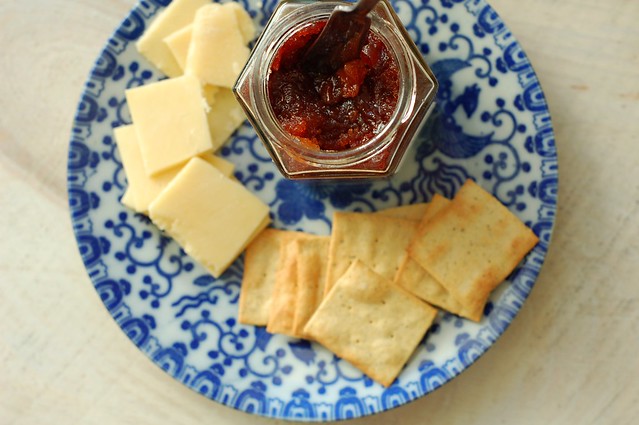

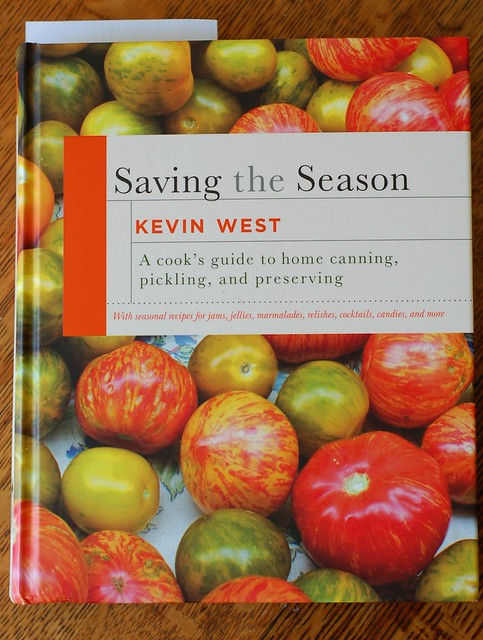
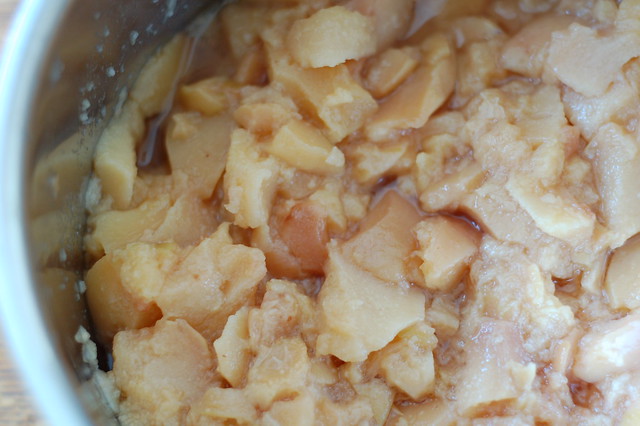
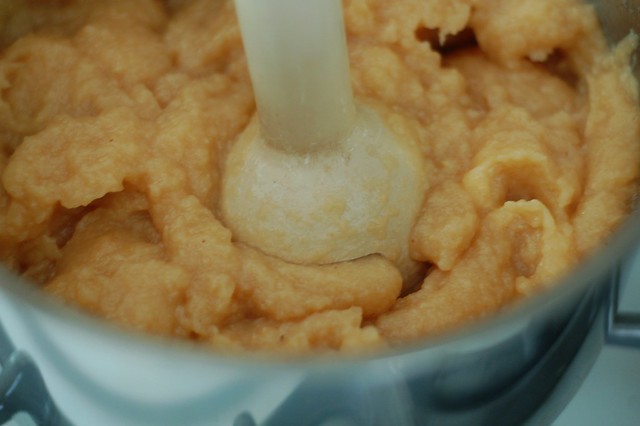
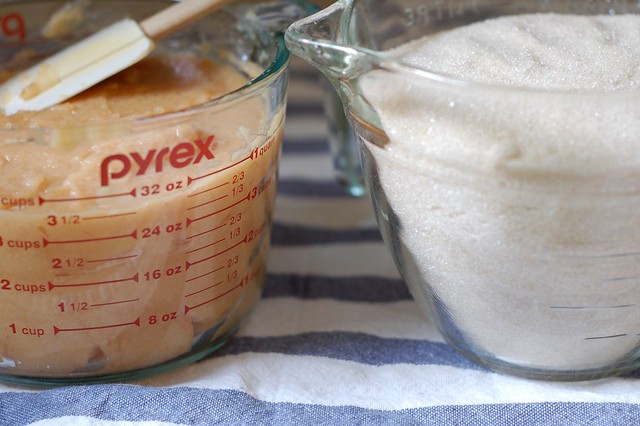
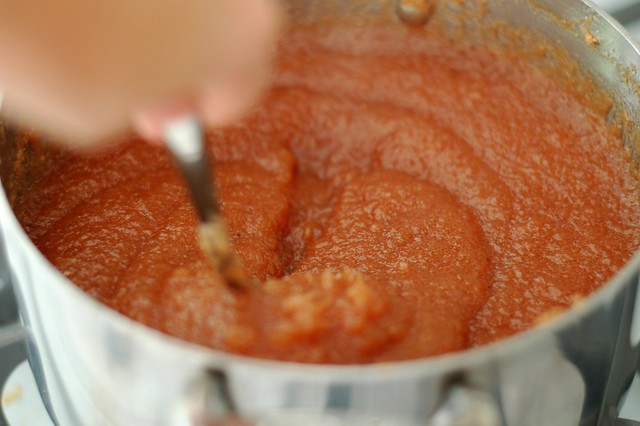

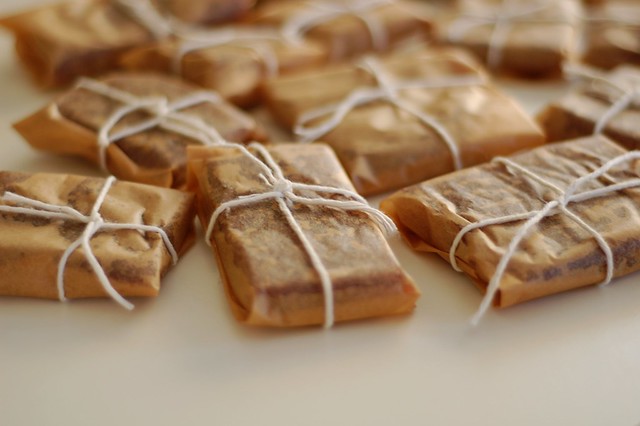
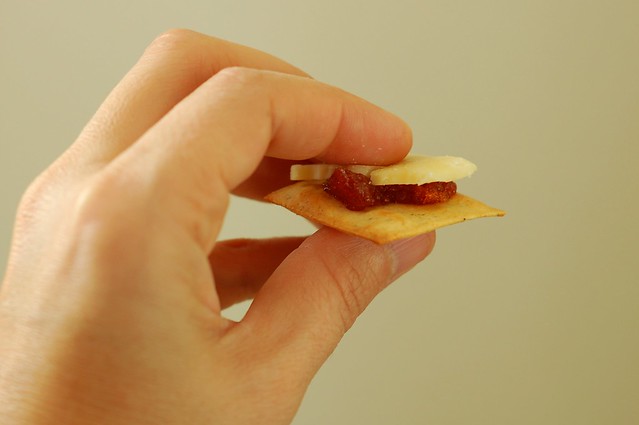
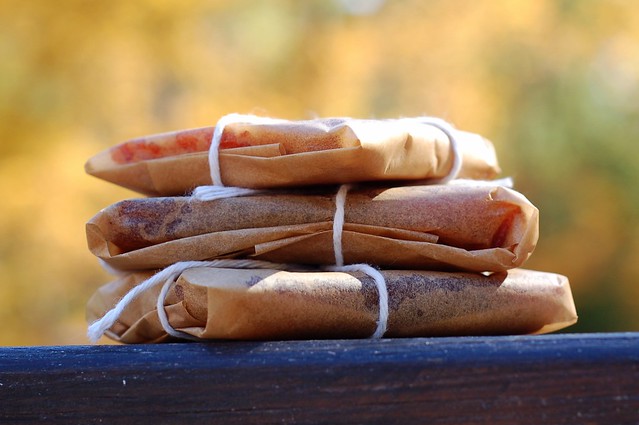
No comments:
Post a Comment